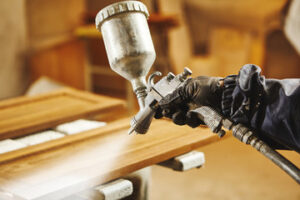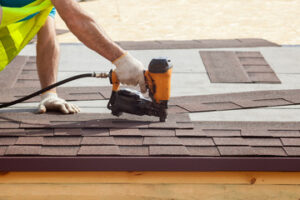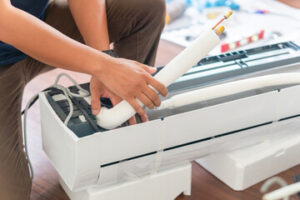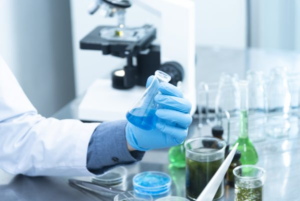Asphalt resurfacing is an affordable option for repairing your existing pavement. It’s great for areas with minor alligator cracking or surface erosion.
The first step is milling, where contractors use a large machine to grind the top layer of the asphalt pavement. The surface is swept and cleaned to remove debris, and tack oil is applied as a bonding agent.

Asphalt milling and overlays are a great option for your parking lot when the surface needs a refresh but it’s not time to completely reconstruct the asphalt from the ground up. The process of milling and overlay is much less expensive than a full-depth reconstruction because it only involves removing the top layer of the pavement, leaving the underlying layers intact. A fresh layer of asphalt is then applied to the milled area to create a new smooth, sturdy surface.
A key aspect of asphalt milling is ensuring that the surface is even and that any structural weaknesses are addressed before an overlay can be applied. This ensures the longevity of the paved surface. Moreover, asphalt milling can be used to help with drainage issues that might be contributing to your pavement’s deterioration.
The asphalt milling machine uses a rotating drum with dozens of carbide-tipped blades to grind down the existing asphalt and remove any bumps, depressions or other irregularities in the surface. The asphalt is then collected and recycled to be reused for a different project, providing an environmentally friendly solution to waste.
An asphalt overlay is then poured onto the newly milled surface to replace the old, damaged asphalt. This provides a stronger, longer-lasting surface and can repair any minor cracking that may have occurred in the past. It can also help with drainage problems, preventing water from penetrating the base and causing further damage.
The overlay can be colored or textured to improve the appearance of the lot, resulting in a clean and attractive parking lot that’s sure to impress visitors and patrons. Additionally, a sealcoating can be added to the overlay to further protect the asphalt from weather and traffic.
Time-Saving
The milling process involves grinding the existing asphalt surface to a certain depth, enabling repair and improvement. It also provides a strong foundation for the overlay that will replace the damaged surface. With state-of-the-art cold planers and milling machines, contractors are able to accomplish this task quickly and efficiently. The resulting material is collected and recycled into new asphalt, thereby cutting down on waste and costs.
In the past, commercial property owners have been reluctant to undertake significant parking lot paving and repair projects due to concerns that these works would render their facilities unusable during the project’s duration. Fortunately, milling and overlays tend to focus on smaller sections of parking lots rather than the entire lot. This means that customers, employees, and guests can continue using the parking lot during a milling and overlay project.
A key benefit of an asphalt overlay is that it is much shorter-lasting than the full removal and replacement of the existing pavement. This is because an overlay only addresses the surface problems and does not fix all of the issues that lead to the deterioration of the asphalt, such as subgrade failure, improper drainage, and poor construction.
Pavement milling, on the other hand, allows for a more thorough overhaul of your parking lot. It aims to repair all major structural damages in the pavement, thus providing a more long-lasting result.
Additionally, resurfacing your parking lot with an asphalt overlay not only helps prevent minor cracking and potholes from becoming more severe, but it can also add value to your property. A fresh, new asphalt surface will create a better impression for visitors and passersby. The added curb appeal can also increase your property’s resale value, should you ever decide to sell it in the future.
Long-Lasting
A mill and overlay is an excellent option if your asphalt has only suffered mild to moderate deterioration. This paving process involves grinding up an inch or two of the existing surface before putting on a new layer. It isn’t appropriate for areas suffering from sinking, rutting or potholes that require a more thorough renovation to the underlying substrate. In these situations, the problem must be addressed to prevent premature failure of the new asphalt.
A quality mill and overlay can extend the service life of your asphalt beyond its expected lifespan. This can save you from costly and time-consuming reconstruction in the future. Typically, mill and overlays can be completed in one-to-two days. This allows for faster access for employees, patrons, vendors and customers.
Milling the surface – This is done with a large machine that grinds away the top layer of the old asphalt pavement to remove loose particles and prepare the base for the overlay. The surface is then covered in a liquid asphalt tack coat to help bond the old and new layers of asphalt together.
Adding the overlay – This is done by placing a layer of hot mix asphalt on top of the milled surface. Heavy machine rollers are used to compact and smooth the asphalt for a like-new appearance.
The new layer of asphalt is designed to be 2 inches thick when finished. It is often referred to as blacktop, or hot mix asphalt (HMA).
While an overlay is good for fixing surface problems such as cracks and alligatoring, it will not fix structural issues such as fatigue cracking or a poor base. These types of issues should be repaired before attempting a mill and overlay.
Generally, an overlay lasts 10 to 15 years in active traffic with proper maintenance. It may last even longer if the environment is friendly and you stay on top of your asphalt maintenance schedule. However, if your parking lot is heavily utilized, you may need to consider a full replacement before the ten-year mark. In these cases, it is important to understand your options and talk to an asphalt expert.
Environmentally Friendly
Asphalt is an incredibly durable material, but it’s not invincible. Over time, pavement can begin to deteriorate and cause issues like potholes and ruts, which lead to poor vehicle performance and road safety. Rather than tearing down and replacing an entire section of the roadway, an asphalt overlay or surface treatment may be used to repair the damaged areas of the surface, extending the life of the pavement.
A milling machine, equipped with a rotating drum covered in carbide teeth, grinds and removes the top layer of asphalt from the roadway surface, leaving the underlying base intact for stability. The removed asphalt, known as millings, is then collected by specialized conveying systems and loaded into dump trucks for disposal or recycling. The area is then swept clean and prepared for the next phase of the project, whether it’s resurfacing or base repair.
By repairing surface damage and restoring proper texture, millings allow for improved skid resistance and road safety, as well as better water drainage, reducing the risk of hydroplaning. In addition, asphalt millings can preserve the geometry of the road, maintaining the original roadway height and minimizing disruption to nearby structures such as curbs, manholes, and storm drains.
When compared to completely replacing an existing roadway, asphalt millings are more environmentally friendly and cost-effective. Since millings are recycled and reused, they reduce the need for new asphalt production and materials, lowering carbon footprints and energy consumption. In addition, reusing existing materials helps conserve resources and reduce landfill waste.
In short, asphalt millings are a sustainable solution for many pavement repairs and construction projects. Whether it’s filling in potholes, creating base materials for new construction or resurfacing, or building pathways and bike trails, asphalt millings are an eco-friendly and cost-effective choice for any project.
Asphalt millings are also a great option for base material for asphalt patching, inlay/overlays, and new construction projects because of their consistency, durability, and permeability. They also provide an ideal surface for new hot-mix asphalt layers to adhere to, ensuring proper compaction and enhanced pavement longevity. Additionally, asphalt millings can be tack-coated to protect against UV rays and moisture, further enhancing their longevity.








